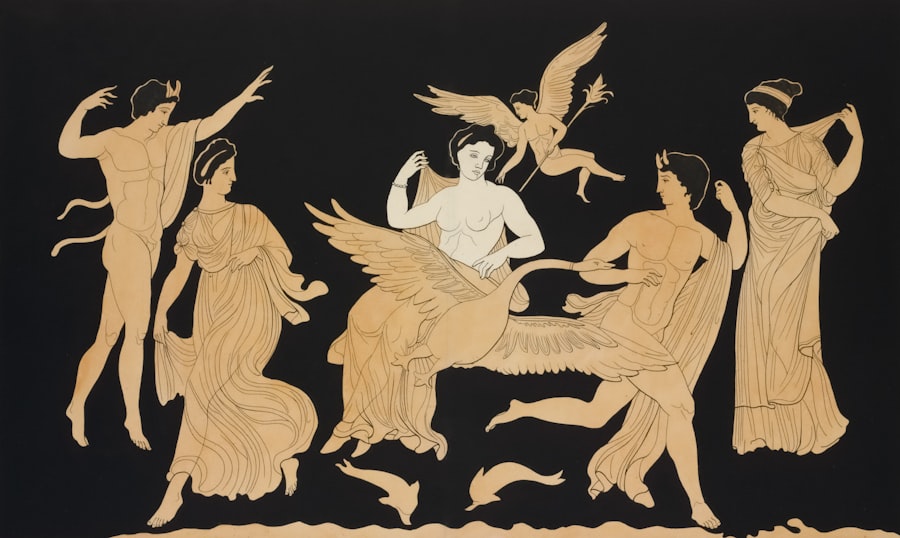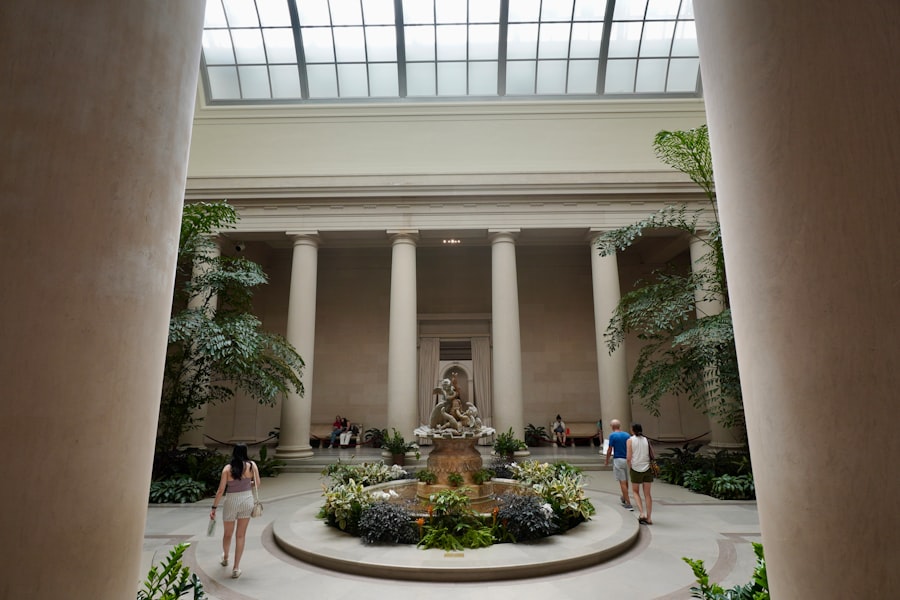The Smithsonian Institution, a revered establishment in the United States, is often shrouded in a veil of myths and misconceptions. Founded in 1846, it has grown into a complex network of museums, research centers, and educational programs that aim to preserve and disseminate knowledge about the natural world, history, and culture. However, its prominence has also made it a target for various conspiracy theories and unfounded claims.
These myths often stem from misunderstandings about the institution’s mission, its role in society, and the nature of its collections. As a result, the public’s perception of the Smithsonian can sometimes be distorted by sensational narratives that lack factual basis. In this exploration of the myths surrounding the Smithsonian Institution, one will delve into the most prevalent misconceptions that have emerged over the years.
From conspiracy theories alleging that the institution suppresses evidence to claims about hidden treasures and alien artifacts, these stories often capture the imagination but fail to hold up under scrutiny. By examining these myths and contrasting them with factual information, one can gain a clearer understanding of the Smithsonian’s true role in preserving history and promoting education.
Key Takeaways
- The Smithsonian Institution is a renowned research and educational organization with a rich history and diverse collections.
- The conspiracy theory about the Smithsonian hiding evidence of ancient civilizations or advanced technology is unfounded and lacks credible evidence.
- There is no evidence to support the myth that the Smithsonian suppresses archaeological findings or hides valuable artifacts.
- The Smithsonian does not hoard hidden treasures, and its collections are accessible to researchers, scholars, and the public.
- The Smithsonian plays a significant role in archaeological discoveries and contributes to our understanding of history and culture.
The Myth of the Smithsonian Conspiracy
One of the most enduring myths about the Smithsonian Institution is the belief that it is involved in a vast conspiracy to hide or manipulate information. This narrative often suggests that the institution is deliberately suppressing evidence that contradicts mainstream historical narratives or scientific understanding. Proponents of this theory argue that the Smithsonian has an agenda to maintain a certain status quo, particularly regarding topics like human origins or ancient civilizations.
This myth is fueled by a general distrust of large institutions and a fascination with conspiracy theories. Many individuals find it easier to believe in a hidden agenda than to accept the complexities of historical research and scientific inquiry. However, this perspective overlooks the rigorous standards of peer review and transparency that govern academic research.
The Smithsonian, like other reputable institutions, operates on principles of integrity and accountability, making it unlikely that such a widespread conspiracy could exist without being exposed.
Debunking the Myth of the Smithsonian Suppression of Evidence

The notion that the Smithsonian suppresses evidence is not only unfounded but also fundamentally misunderstands how scientific research and historical scholarship function. The institution is committed to advancing knowledge through research and education, which inherently involves questioning existing narratives and exploring new evidence. In fact, many of the Smithsonian’s researchers actively seek out new findings that challenge established beliefs, contributing to a more nuanced understanding of history and science.
Moreover, the Smithsonian’s collections are accessible to researchers from around the world, allowing for independent study and verification of findings. The institution encourages collaboration with scholars and institutions globally, fostering an environment where diverse perspectives can be shared and debated. This openness contradicts the idea of suppression; rather than hiding evidence, the Smithsonian promotes inquiry and dialogue among experts in various fields.
The Myth of the Smithsonian’s Hidden Treasures
| Artifact | Origin | Type | Age |
|---|---|---|---|
| Egyptian Mummy | Egypt | Mummified Human Remains | 3,000 years |
| Aztec Calendar Stone | Mexico | Carved Stone | 14th-16th century |
| Hope Diamond | India | Diamond | Unknown |
| Star-Spangled Banner | United States | Flag | 19th century |
Another popular myth surrounding the Smithsonian Institution is that it harbors vast hidden treasures—artifacts and relics that are not on public display but are instead kept secret from the public eye. This narrative often suggests that these treasures contain significant historical or cultural value that could reshape our understanding of history if only they were revealed. Such claims can be enticing, as they tap into a sense of mystery and adventure.
In reality, while it is true that not all artifacts in the Smithsonian’s extensive collections are on display at any given time, this is primarily due to practical considerations such as space limitations and conservation needs. The institution houses millions of items across its various museums, many of which require careful preservation and study before they can be exhibited. Furthermore, the Smithsonian regularly rotates exhibits to showcase different aspects of its collections, ensuring that visitors have opportunities to engage with a wide range of artifacts over time.
The Truth about the Smithsonian’s Role in Archaeological Discoveries
The Smithsonian Institution plays a crucial role in archaeological discoveries and research, contributing significantly to our understanding of human history. Its researchers are involved in numerous excavations and studies around the world, collaborating with local communities and international scholars to uncover new findings. This commitment to archaeological research underscores the institution’s dedication to advancing knowledge rather than suppressing it.
Additionally, the Smithsonian actively publishes its research findings in academic journals and shares them with the public through exhibitions and educational programs. This transparency highlights its role as a leader in promoting scientific inquiry and historical understanding. By engaging with both academic audiences and the general public, the Smithsonian fosters a culture of curiosity and learning that benefits society as a whole.
Debunking the Myth of the Smithsonian’s Secret Societies

The idea that the Smithsonian Institution is connected to secret societies is another myth that has gained traction over time. Some conspiracy theorists claim that influential groups within or associated with the institution manipulate information for their own purposes. This narrative often draws on broader fears about elitism and control within powerful organizations.
However, there is no credible evidence to support claims of secret societies operating within the Smithsonian. The institution is governed by a board of regents composed of public officials and private citizens who oversee its operations with transparency and accountability. Furthermore, its research processes are subject to rigorous ethical standards and peer review, ensuring that findings are based on sound methodology rather than hidden agendas.
The Myth of the Smithsonian’s Alien Artifacts
One of the more sensational myths surrounding the Smithsonian Institution involves claims that it possesses alien artifacts or evidence of extraterrestrial life. This narrative often suggests that the institution is concealing such findings from the public due to their implications for humanity’s understanding of its place in the universe. Proponents of this myth frequently cite anecdotal accounts or fringe theories rather than credible scientific evidence.
In reality, there is no substantiated evidence supporting claims of alien artifacts within the Smithsonian’s collections. The institution adheres to strict scientific standards when evaluating artifacts and conducting research. Any claims regarding extraterrestrial materials would require rigorous validation through peer-reviewed studies before being accepted as credible.
The fascination with alien artifacts reflects broader cultural interests in science fiction and conspiracy theories but does not align with established scientific understanding.
The Truth about the Smithsonian’s Funding and Financial Transparency
Concerns about funding and financial transparency often arise in discussions about large institutions like the Smithsonian. Some myths suggest that the institution operates under secretive financial practices or relies heavily on government funding to maintain its operations. These narratives can create an impression of mismanagement or lack of accountability.
In truth, the Smithsonian Institution operates with a diverse funding model that includes federal appropriations, private donations, grants, and earned income from its various programs. The institution publishes annual reports detailing its financial status, demonstrating a commitment to transparency and accountability in its operations. By diversifying its funding sources, the Smithsonian ensures its independence while maintaining high standards for financial management.
Debunking the Myth of the Smithsonian’s Censorship of History
The idea that the Smithsonian engages in censorship regarding historical narratives is another prevalent myth that warrants examination. Critics often claim that certain topics or perspectives are deliberately omitted from exhibitions or research due to political correctness or institutional bias. This belief can undermine public trust in historical scholarship and education.
However, this assertion fails to recognize the complexities involved in curating exhibitions and conducting research. The Smithsonian strives to present accurate representations of history while acknowledging multiple perspectives. Curators work diligently to ensure that exhibits reflect diverse viewpoints and engage with challenging topics rather than shying away from them.
Censorship implies an intentional suppression of information; instead, what occurs at institutions like the Smithsonian is an ongoing dialogue about how best to represent history in an inclusive manner.
The Myth of the Smithsonian’s Involvement in Political Cover-ups
Some conspiracy theories suggest that the Smithsonian Institution is involved in political cover-ups or collusion with government entities to manipulate historical narratives for political gain.
In reality, the Smithsonian operates as an independent entity dedicated to education and research rather than political agendas.
Its mission focuses on advancing knowledge for public benefit rather than serving specific political interests. Researchers at the institution are committed to upholding academic integrity and ethical standards in their work, ensuring that their findings are based on evidence rather than political motivations.
Separating Fact from Fiction about the Smithsonian Institution
In conclusion, while myths surrounding the Smithsonian Institution may capture public imagination, they often lack grounding in reality. From conspiracy theories about suppression of evidence to sensational claims regarding hidden treasures or alien artifacts, these narratives can distort perceptions of an institution dedicated to education and research. By examining these myths critically and contrasting them with factual information, one can appreciate the true role of the Smithsonian as a leader in preserving history and promoting scientific inquiry.
The importance of separating fact from fiction cannot be overstated; understanding what lies behind these myths allows for a more informed perspective on institutions like the Smithsonian. As society continues to grapple with complex issues related to history, science, and culture, fostering an environment where inquiry thrives will ultimately benefit everyone—encouraging curiosity while dispelling unfounded fears rooted in misunderstanding.
The Smithsonian Institution, often shrouded in myths and urban legends, has been a subject of intrigue for many. One such myth is the existence of secret underground vaults housing mysterious artifacts. For those interested in exploring these myths further, an article on the topic can be found on X File Findings. This article delves into the various legends surrounding the Smithsonian and attempts to separate fact from fiction. To read more about these fascinating stories, visit the article on
